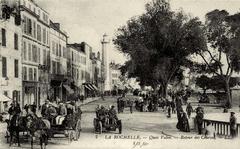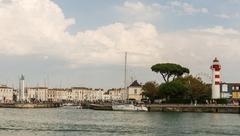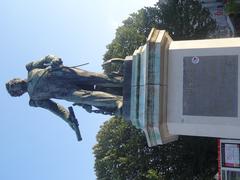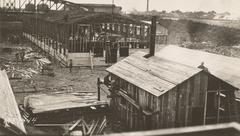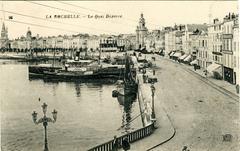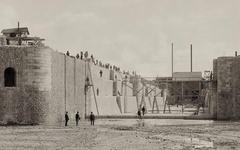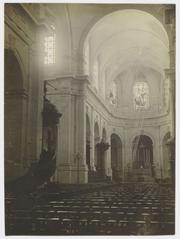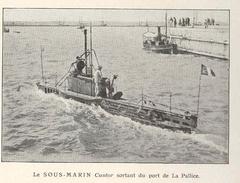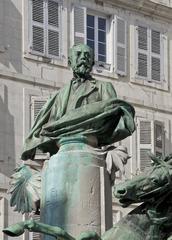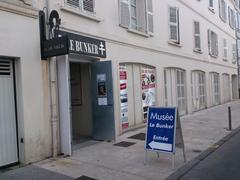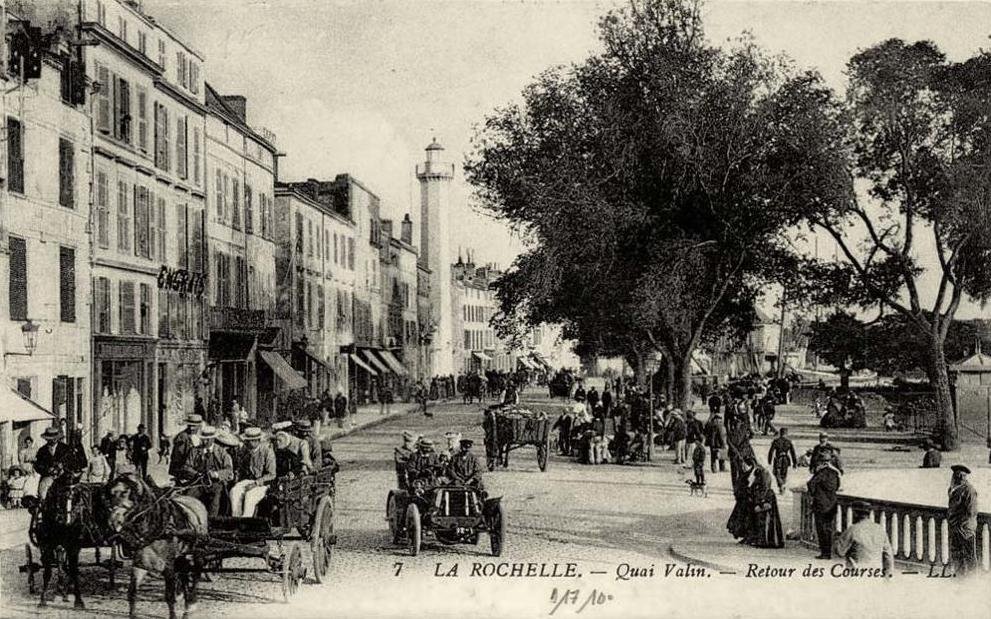
Visiting Place du Commandant de la Motte Rouge in La Rochelle: Hours, Tickets, and Tips
Date: 31/07/2024
Introduction
Discover the rich historical tapestry of Place du Commandant de la Motte Rouge in La Rochelle, France, a city with roots stretching back to the 10th century. This historically significant public square has played a pivotal role in the city’s evolution, from its early urbanization in the 12th century to its modern-day status as a cultural and social hub. Named after Commandant de la Motte Rouge, a notable figure in French military history, the square is a testament to La Rochelle’s enduring resilience and vibrant heritage. Visitors to this site can delve into centuries of history, from the medieval period, through its time as a Protestant stronghold during the French Reformation, to its strategic importance during the Siege of 1627-1628. The square’s transformation over the centuries is marked by significant events and archaeological discoveries that offer insights into the urban organization and cultural shifts of the region. Today, Place du Commandant de la Motte Rouge stands as a blend of historical remnants and contemporary urban life, reflecting the city’s rich and complex history (source, source).
Table of Contents
- [Introduction](#introductionintroduction)
- [Historical Background of Place du Commandant de la Motte Rouge](#historical-background-of-place-du-commandant-de-la-motte-rougehistorical-background-of-place-du-commandant-de-la-motte-rouge)
- [Early Urbanization and Medieval Period](#early-urbanization-and-medieval-periodearly-urbanization-and-medieval-period)
- [The Siege of 1627-1628](#the-siege-of-1627-1628the-siege-of-1627-1628)
- [Transformation and Reconstruction](#transformation-and-reconstructiontransformation-and-reconstruction)
- [Archaeological Discoveries](#archaeological-discoveriesarchaeological-discoveries)
- [The Huguenot Legacy](#the-huguenot-legacythe-huguenot-legacy)
- [The Modern Era](#the-modern-erathe-modern-era)
- [Visitor Information](#visitor-informationvisitor-information)
- [Visiting Hours and Tickets](#visiting-hours-and-ticketsvisiting-hours-and-tickets)
- [Nearby Attractions and Travel Tips](#nearby-attractions-and-travel-tipsnearby-attractions-and-travel-tips)
- [Special Events and Guided Tours](#special-events-and-guided-toursspecial-events-and-guided-tours)
- [Photographic Spots](#photographic-spotsphotographic-spots)
- [FAQ Section](#faq-sectionfaq-section)
- [Call to Action](#call-to-actioncall-to-action)
- [Conclusion](#conclusionconclusion)
Historical Background of Place du Commandant de la Motte Rouge
Early Urbanization and Medieval Period
The Place du Commandant de la Motte Rouge in La Rochelle has a rich historical tapestry that dates back to the medieval period. The area saw its first significant urbanization towards the end of the 12th century. This early development laid the groundwork for the neighborhood’s intricate urban fabric, which has evolved over centuries (source).
The Protestant Stronghold
La Rochelle emerged as a significant Protestant stronghold during the French Reformation. The city’s fortifications were a testament to its strategic importance and resilience. The fortifications withstood numerous sieges, most notably the siege by Cardinal Richelieu in 1627. The city’s capitulation in 1628 marked the end of the Huguenot political party’s influence and the city’s religious ambitions (source).
The Siege of 1627-1628
The siege of La Rochelle from 1627 to 1628 was a pivotal event in the city’s history. Cardinal Richelieu’s forces besieged the city, leading to its eventual surrender on October 28, 1628. The following day, Richelieu entered the city and celebrated a solemn Mass in the Church of Sainte-Marguerite. King Louis XIII entered La Rochelle on November 1 to receive its surrender, followed by a grand procession on November 3. The king abolished the city’s former privileges, ordered the leveling of most ramparts, and turned Protestant temples over to the Catholic Church (source).
Transformation and Reconstruction
The Place du Commandant de la Motte Rouge has undergone several transformations over the centuries. The area around the square was initially used as a cemetery in the mid-17th century, with the reconstruction of the Saint-Nicolas Church completed in 1672. By the late 19th century, the cemetery was transformed into a garden, reflecting the changing urban landscape (source).
Archaeological Discoveries
Archaeological interventions at 9 Place du Commandant de la Motte Rouge have provided valuable insights into the area’s historical layers. Excavations conducted in 2008 revealed several maçonneries and circulation levels, although their specific functions remain uncertain. These findings offer a glimpse into the urban organization of the neighborhood from the medieval period to the present day (source).
The Huguenot Legacy
The Huguenot legacy is deeply embedded in La Rochelle’s history. The city declared itself an independent Reformed Republic in 1568, leading to conflicts with the central Catholic government. The tensions culminated in the siege of 1627-1628, which significantly weakened the Huguenots. Despite their efforts, the Huguenots were unable to prevent the revocation of the Edict of Nantes in 1685 by Louis XIV, leading to active persecution and the eventual exodus of many Huguenot families (source).
The Modern Era
In the modern era, the Place du Commandant de la Motte Rouge continues to be a site of historical significance. The fortifications that once stood as a testament to the city’s resilience were decommissioned and demolished after World War I. Today, the square is a blend of historical remnants and contemporary urban life, reflecting La Rochelle’s rich and complex history (source).
Visitor Information
Visiting Hours and Tickets
- Visiting Hours: The Place du Commandant de la Motte Rouge is open to the public 24/7. However, specific landmarks and museums nearby may have different visiting hours.
- Tickets: There is no entry fee to visit the Place du Commandant de la Motte Rouge itself. However, nearby attractions like the Musée Rochelais d’Histoire Protestante may require tickets. Please check their official websites for the latest information on ticket prices and availability.
Nearby Attractions and Travel Tips
- Vieux-Port: Just a short walk away, the Vieux-Port is the heart of La Rochelle, known for its seafood restaurants, sailing boats, and iconic towers such as the Tour de la Lanterne, Tour Saint-Nicolas, and Tour de la Chaîne.
- Saint-Nicolas Church: Reconstructed in 1672, this church stands as a symbol of the city’s resilience and transformation over the centuries.
- Musée Rochelais d’Histoire Protestante: Located nearby, this museum offers a comprehensive look at the history of Protestantism in the city.
Special Events and Guided Tours
The Place du Commandant de la Motte Rouge often hosts special events and guided tours that delve deeper into its historical significance. Check local listings and tourism websites for the latest information.
Photographic Spots
The area around the Place du Commandant de la Motte Rouge offers numerous photographic opportunities, from the medieval fortifications to the serene gardens that replaced the old cemetery.
FAQ Section
- What are the visiting hours for the Place du Commandant de la Motte Rouge? The square is open to the public 24/7, but nearby attractions may have specific hours.
- Is there an entry fee? No, visiting the square is free, but some nearby attractions may require tickets.
- What are some nearby attractions? The Vieux-Port, Saint-Nicolas Church, and the Musée Rochelais d’Histoire Protestante are all close by.
Call to Action
Explore the Place du Commandant de la Motte Rouge and immerse yourself in La Rochelle’s rich history. Download the mobile app Audiala for more historical insights, check out other related posts, and follow us on social media for updates.
Conclusion
The Place du Commandant de la Motte Rouge is a microcosm of La Rochelle’s rich historical and cultural heritage. From its early urbanization in the medieval period to its role as a Protestant stronghold and its modern-day significance, the square offers a fascinating journey through time. Visitors can explore the architectural remnants, delve into the Huguenot legacy, and experience the vibrant urban life that defines this historic site (source, source).
